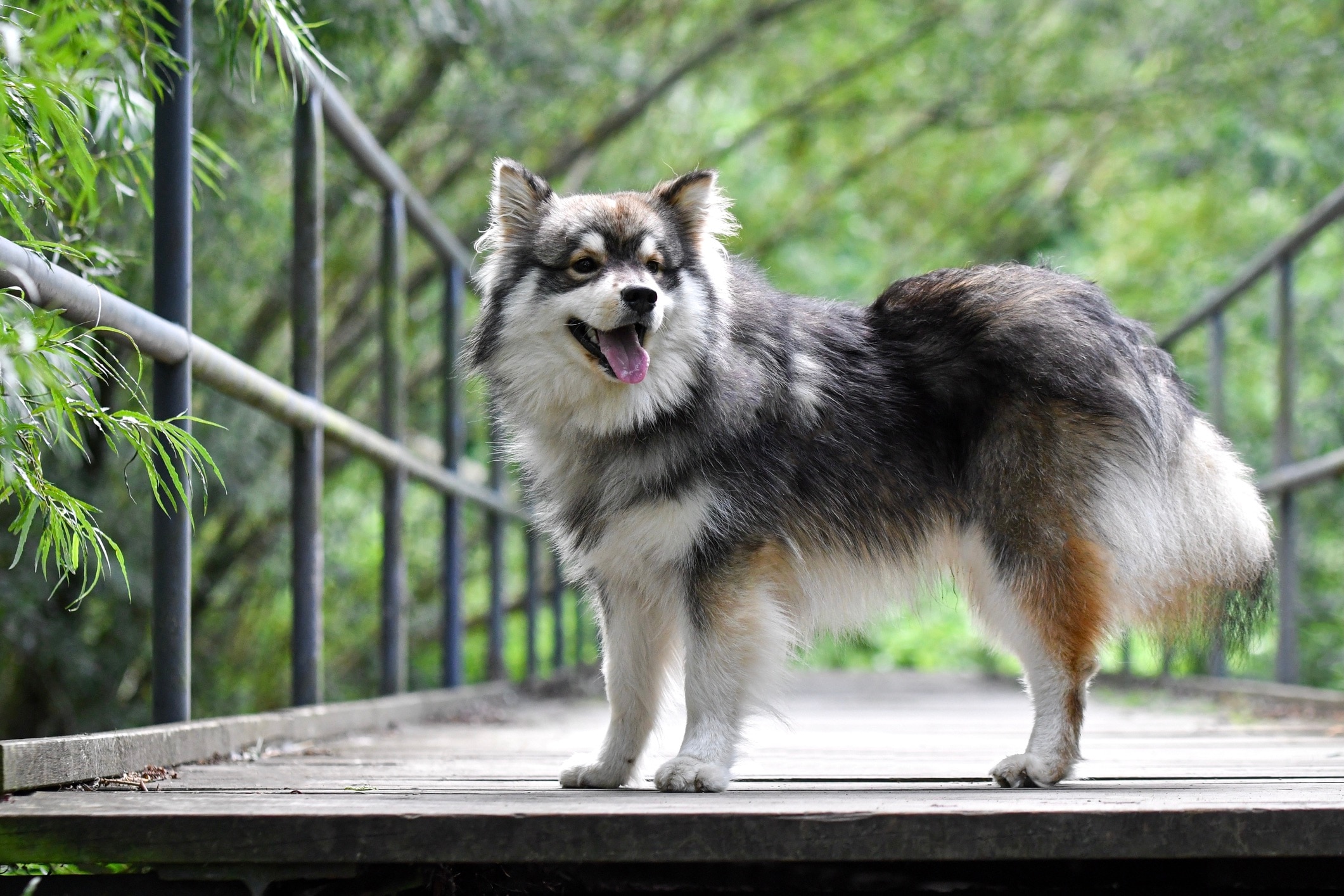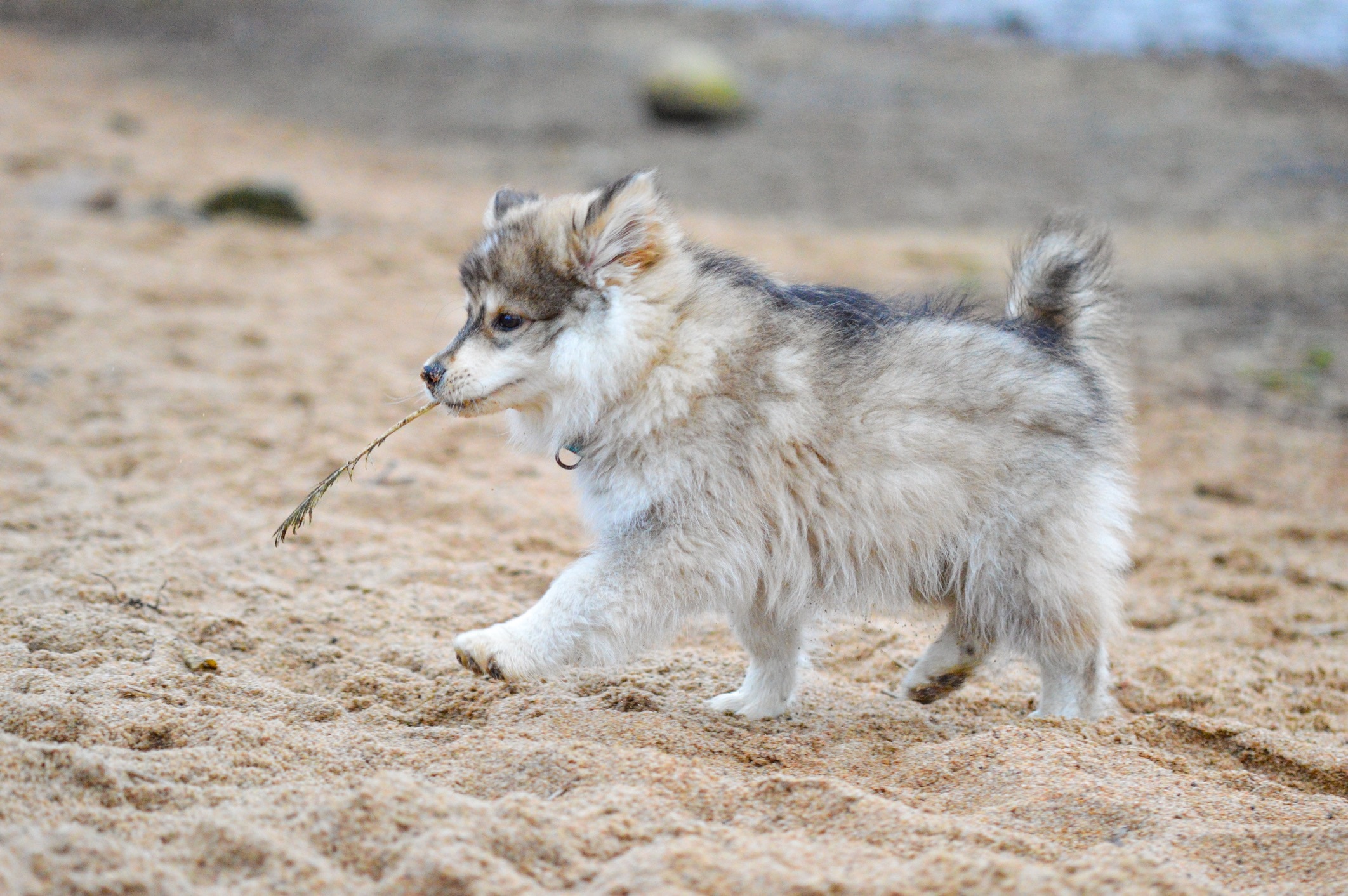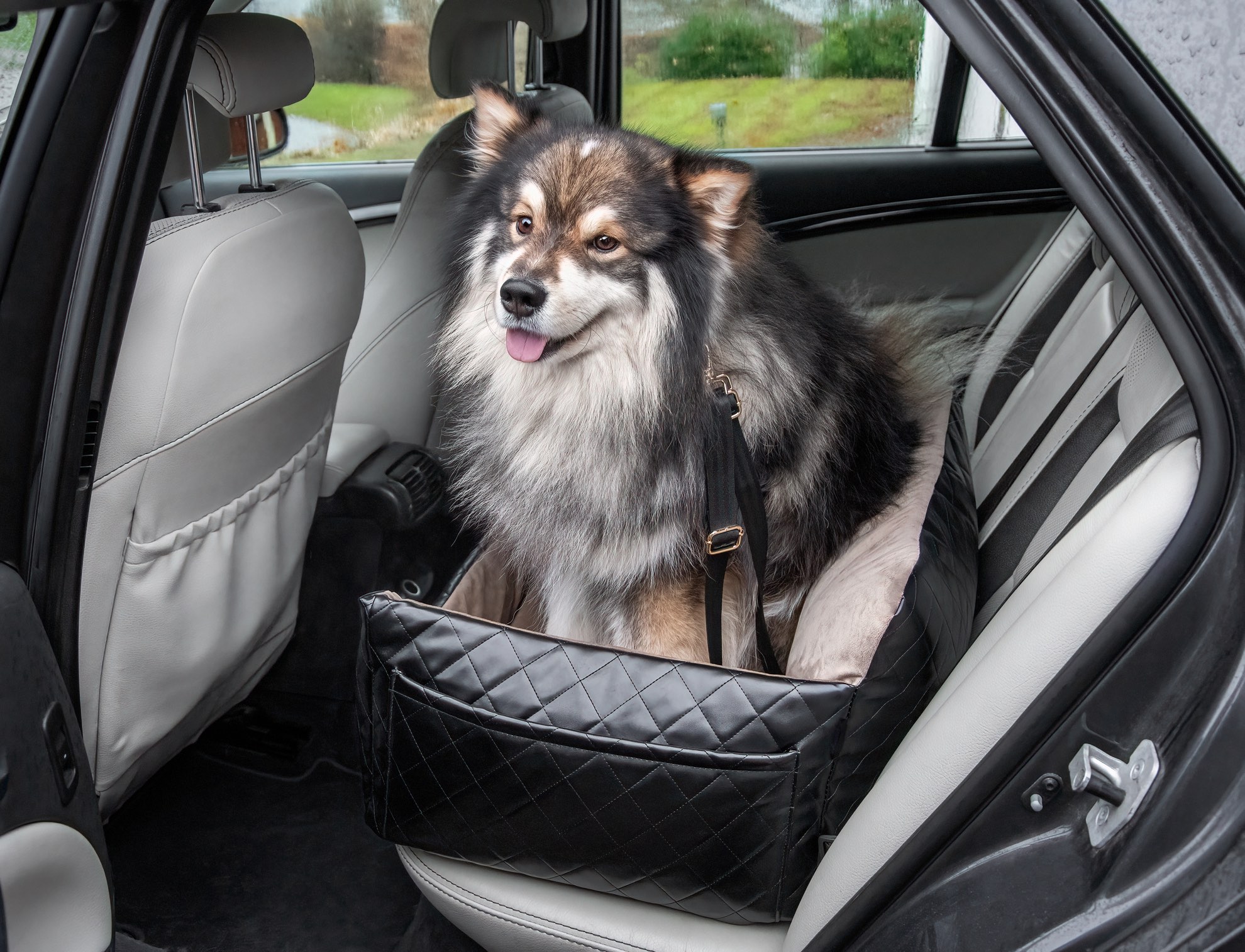Finnish Lapphund
LindaE/iStock / Getty Images Plus via Getty Images
The Finnish Lapphund (or Lappy, for short) is a medium-sized (16–21 inches tall; 33–53 pounds) herding dog. Developed by the Sami, or Lapp, people of Lapland (a region near the Arctic Circle that includes parts of Sweden, Finland, Norway, and Russia), Lappies had to be tough to endure the harsh weather and perform as reindeer herders.
And yet, Finish Lapphund dogs are also known for their softness—and we aren’t just talking about their eye-catching coats. Finnish Lapphunds are calm and friendly companions around people they love.
Accepted as official members of the American Kennel Club in 2011, the breed standard describes the Finnish Lapphund breed as being “strongly built and thickly coated.” This thick coat has two layers: a straight, long outer layer that stands erect and repels water and a soft, dense undercoat that can come in any color.
Caring for a Finnish Lapphund

As with all dogs bred for a specific job, understanding the Finnish Lapphund breed’s working instincts is key to providing them with the best home and care.
For example, barking is an important communication tool when herding, and prospective pet parents should be prepared for a particularly vocal dog. This trait, coupled with a strong need for companionship, means the Finnish Lapphund is best suited to a detached home without close neighbors who could be annoyed by frequent canine communication.
Without proper safeguards in place, the Lappy’s herding instincts can get them into trouble. All outdoor play should be on a leash or within a securely fenced area, as Finnish Lapphunds are happy to chase whatever creature crosses their path.
Unlike many working dogs, the Lappy doesn’t need nonstop action and requires only moderate amounts of exercise (about 60–90 minutes every day). Sweet-tempered and affectionate, Finnish Lapphunds can do well with family members of all ages (provided children are taught how to safely interact with animals). They also typically get along with other dogs, but mature Lappy dogs adopted into homes that already have pets may need more help adjusting.
Finnish Lapphund Health Issues

Finnish Lapphunds are generally healthy dogs with an average lifespan of 12–15 years, which is typical for a medium-sized dog. Still, like all dogs, they are predisposed to certain health conditions.
Hip Dysplasia
Hip dysplasia is a condition in which the hip joint doesn’t develop properly and is characterized by a looseness that leads to degenerative joint disease (osteoarthritis). Mild cases are treated with physical therapy and anti-inflammatory and pain medications, while severe cases require surgery.
Common signs of hip dysplasia include:
-
Limping
-
Reluctance to get up or jump
-
Shifting of weight to front legs
-
Loss of muscle mass in back legs
-
Hip pain
-
Trouble going up and down stairs
Elbow Dysplasia
Similar to hip dysplasia, elbow dysplasia refers to an elbow joint that hasn’t developed as it should. It’s one of the most common causes of osteoarthritis in canine elbows. Anti-inflammatory drugs can help with the pain and inflammation, but surgery is recommended before osteoarthritis develops.
Common signs of elbow dysplasia include:
-
Limping, especially after exercise
-
Reluctance or unwillingness to walk or exercise
-
Stiffness in the elbow joint
-
Grating or crackling sound from the elbow joint
Progressive Retinal Atrophy
Progressive retinal atrophy (PRA) is an umbrella term for a family of eye disorders in which the rods and cones of the retina either don’t develop properly in puppies (early-onset PRA) or begin deteriorating in adulthood (late-onset PRA). There’s no cure for PRA, and the condition eventually leads to blindness.
Signs of PRA include:
-
A reluctance to enter dark spaces
-
Clumsiness
-
Dilated pupils that constrict slowly in response to light
-
Eyes that are more reflective in the dark
What To Feed a Finnish Lapphund
No two Lappies are the same, so you’ll need to partner with your veterinarian to develop a feeding plan that’s nutritionally complete and balanced for your pup’s age, size, and health history.
How To Feed a Finnish Lapphund
Most adult Lappies should eat two meals a day: one in the morning and one in the evening. Because Finnish Lapphund puppies have a higher metabolism than adult dogs, it’s generally best to add a midday feeding, for a total of three meals. Your vet can help you determine the best schedule for your dog’s age.
How Much Should You Feed a Finnish Lapphund?
The nutrition label on your dog’s food bag includes a guide that gives a general idea of how much you should feed your Finnish Lapphund dog. This recommendation is based on your dog’s weight; for a more precise recommendation, it’s best to ask your veterinarian. They will tailor their advice not only to your dog’s weight, but also to their body condition score, lifestyle, and health needs.
Remember to factor treats into your dog’s daily calorie count, as they can add up quickly. Treats should never make up more than 10% of your dog’s daily diet.
Nutritional Tips for Finnish Lapphunds
If your Finnish Lapphund is eating a dog food approved by the Association of American Feed Control Officials (AAFCO), they shouldn’t need anything extra. However, nutritional supplements may be recommended by your veterinarian to treat certain health conditions. Talk to your vet before adding anything new, including supplements, to your dog’s diet.
Behavior and Training Tips for Finnish Lapphunds
Finnish Lapphund Personality and Temperament

Bred to herd reindeer, the courageous Finnish Lapphund is active, alert, and loud. Expect a vocal dog that needs exercise (whether it be neighborhood walks or running an agility course) every day.
As companions, Lappies are smart and gentle dogs, according to the Finnish Lapphund Club of America (FLCA). Their need for attention is high, and they can get along with people of all ages when socialized as a puppy. Just remember: Interactions between children and all dogs should be supervised.
Finnish Lapphund Behavior
Finnish Lapphunds are noisy herders, and you don’t necessarily remove this working dog trait by removing Lappies from their work. Training can help limit their barking, but it’s best to anticipate a highly communicative dog and to plan accordingly. The Lappy may not be the best dog for apartment-dwellers.
Reindeer aren’t the only animals Lappies are interested in rounding up, which is why all outside exercise should occur either on a leash or within a securely fenced area to keep them from running after squirrels, rabbits, or cats.
Finally, Finnish Lapphunds are dogs that crave companionship. Bored and lonely Lappies are more likely to engage in unwanted behaviors like excessive barking, chewing, and digging.
Finnish Lapphund Training
It’s important to safely expose your Finnish Lapphund puppy to different animals, people, environments, activities, and objects during their first 16 weeks of life. Socializing your pup during this crucial learning period can help them feel comfortable in different situations they’ll inevitably encounter. Ask your veterinarian to suggest age-appropriate activities for your pet.
Though intelligent and generally eager please, herding dogs like the Lappy can also be eager to do their own thing. Regardless of temperament, Finnish Lapphunds respond best to positive, rewards-based training, and you can use training as a way to provide mental and physical exercise.
Fun Activities for Finnish Lapphunds
Finnish Lapphund Grooming Guide
The Finnish Lapphund’s thick, weather-resistant coat produces a lot of stray fur. While their grooming needs are fairly minimal, have a lint roller (or two) at the ready. Typical Finnish Lapphund colors include black, brown, blonde, brindle, and wolf sable.
Skin Care
Good coat care is the key to good skin care. Regular grooming can help remove twigs, burrs, and other debris that can get caught in the Lappy’s coat and irritate their skin.
Monthly bathing is usually sufficient, but ask your vet if you’re uncertain. Keep in mind that too many baths can strip the skin of healthy oils. Using a gentle oatmeal shampoo can hydrate the coat without stripping natural oils.
Recommended Products
Coat Care
The Finnish Lapphund Club of America recommends a weekly brushing and extra attention during heavy shedding seasons, which will come once or twice a year (typically spring and fall). Pay special attention to areas that are more prone to matting, such as behind the ears and under the legs.
Recommended Products
Eye Care
Because Lappies are susceptible to PRA, pay special attention to your dog’s eyes. Contact your veterinarian if you notice concerning changes, such as discharge, redness, or cloudiness.
Ear Care
Talk to your veterinary team about how often you should clean your dog’s ears and which ear-cleaning products to use. Call your vet if you notice signs of an ear infection, such as redness, odor, pain, itchiness, or head shaking.
Considerations for Pet Parents

Here are some questions to consider before adding a Finnish Lapphund to your family:
-
Do I have the time and energy to exercise a moderately energetic dog every day?
-
Can I keep a dog on a leash or within a fenced area when outside?
-
Can I handle fur throughout my home?
-
Do I live where a barking dog wouldn’t be a neighborhood nuisance?
-
Do I have the skills and patience to train a dog using positive reinforcement?
-
Am I home enough to give a dog enough companionship?
-
Am I financially prepared to provide veterinary care?
-
Can I provide a dog with a loving home for their lifetime, which could be 15 years or more?
If you can answer these questions with an enthusiastic “Yes!” you may be ready to parent a Lappy.
Finnish Lapphund FAQs
Are Finnish Lapphunds good pets?
Finnish Lapphunds can be a good pet for the right family. They are sweet and smart dogs that need moderate amounts of exercise. And while their grooming needs aren’t taxing, they do shed a lot. Lappies do best in homes where they won’t annoy neighbors with their barking and where they can spend a lot of time with their family.
Do Finnish Lapphunds bark a lot?
Yes, Finnish Lapphunds are highly accomplished barkers. This trait stems from their original jobs as reindeer herders, because barking was an essential part of controlling and directing the animals in their care. While training can help curb some of the noise, prospective Lappy parents should be prepared to live with a talkative dog.
Are Finnish Lapphunds cuddly?
Yes, Finnish Lapphunds are cuddly in texture (thanks to their thick double coats) and in temperament.
How big is a full-grown Finnish Lapphund?
The average Finnish Lapphund size is 16–21 inches tall and 33–53 pounds. Females tend to be a bit smaller than males.


